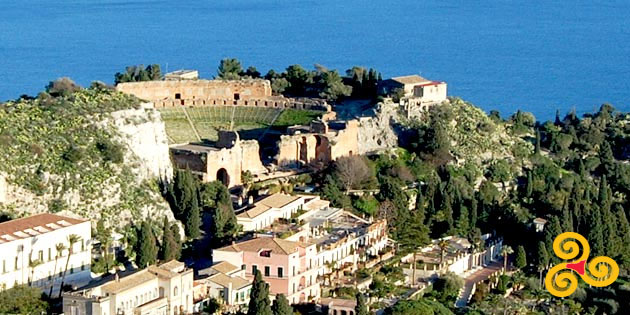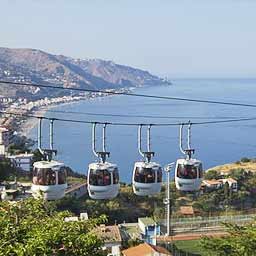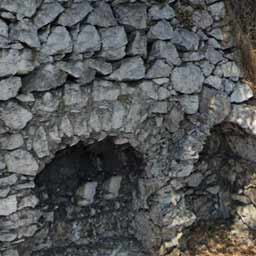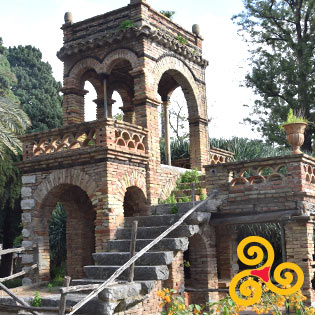Ancient Theater in Taormina
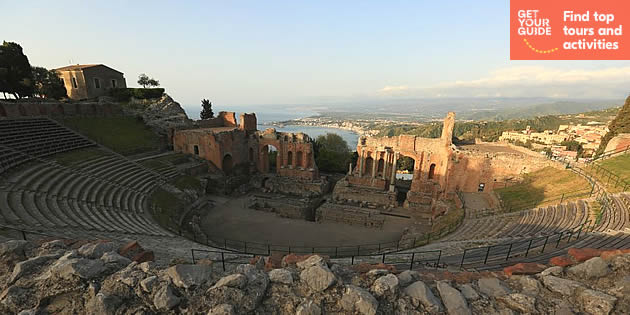
Skip-the-Line Entry Ticket to the Ancient Theater
Skip the lines with this entry ticket to the Ancient Theater of Taormina, one of the largest buildings for shows in the Italian Peninsula
Ancient Theater of Taormina is the most important and best preserved ancient monument in the village. The Theater stands in a wonderful panoramic point from which it is possible to admire Mount Etna and the Ionian Sea.
The construction of the theater probably began by the Greeks around the third century. BC, at the time of Gerone II. To allow construction, over 100,000 cubic meters of rock had to be manually removed from the mountain. The plant was then renovated and enlarged by the Romans, who inserted columns, statues and ingenious roofing. The theater of Taormina, in size, is the second in Sicily after that of Syracuse.
The ancient theater of Taormina, which was born to host dramatic or musical performances , was transformed during the Roman era to make way for gladiator games and naval battles. This led to the expansion of the orchestra, which in Greek times was intended for players, so as to be adapted to the new arena function.
The cavea, that is the space for the steps, has a diameter of about 109 meters and is divided into nine wedge-shaped sectors, served by eight ladders. The steps were divided into two parts, in one part the spectators sat, while in the other half, slightly hollowed, those who sat on the upper step rested their feet. On some steps the name of Philistis is engraved, the wife of Gerone II, tyrant of Syracuse at the time of the construction of the theater.
On the top of the steps there is a double portico which accompanies the entire development of the stalls, covered by a vault. The arcades were built to increase the number of seats and the vaults of the arcades supported a terrace each. The first time it supported the lower terrace, divided into several rows of wooden seats reserved for women, while the arch of the second portico, which supported the highest terrace of the theater, without fixed seats, housed the humblest people. Thirty-six small niches open onto the wall of the portico and perhaps were used to house some statues.
The scene is the most important part that remains of the Theater and partly retains its original form. However, nothing remains of its ornaments and columns. During the Middle Ages most of the columns that decorated the scene were removed to build palaces and embellish places of worship, including the Cathedral. The scene has three large openings, flanked by niches and columns relocated here in the nineteenth century, by the architect Francesco Saverio Cavallari.
For years now, the theater of Taormina has been the splendid setting for cultural events and prizes of international level: many movie stars over the years have collected the golden statuettes of the “David di Donatello” film festival. The Theater also offered the unforgettable setting for many films which are now fully part of the history of great international cinema: from "Intrigo a Taormina" with Ugo Tognazzi, Walter Chiari, Gino Cervi and Sylvia Koscina, to "Grande grosso e Verdone" by Carlo Verdone, to "The goddess of love" by Woody Allen.
Il Teatro Antico di Taormina: dalla storia al mito.
In questa mostra troverai un progetto ibrido tra oggetti storici del passato e contributi multimediali che trasformano il monumento-icona della Sicilia, risalente all'epoca del Grand Tour, in un palinsesto della memoria collettiva occidentale degli ultimi tre secoli.
Acquista i biglietti
